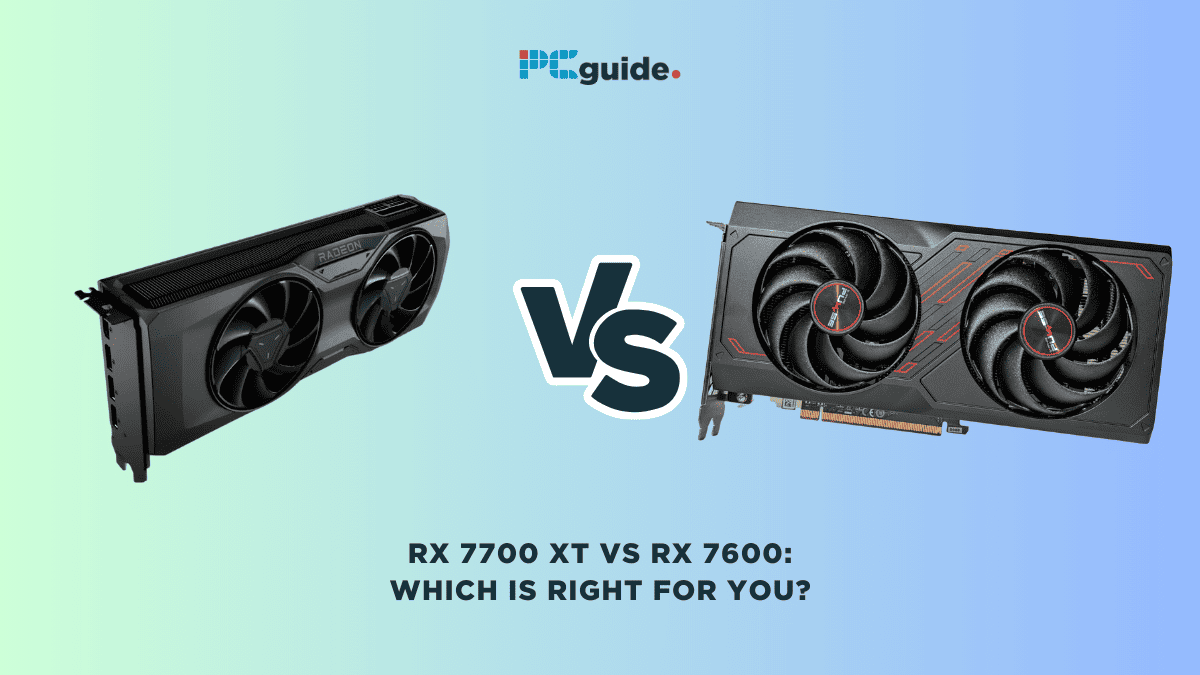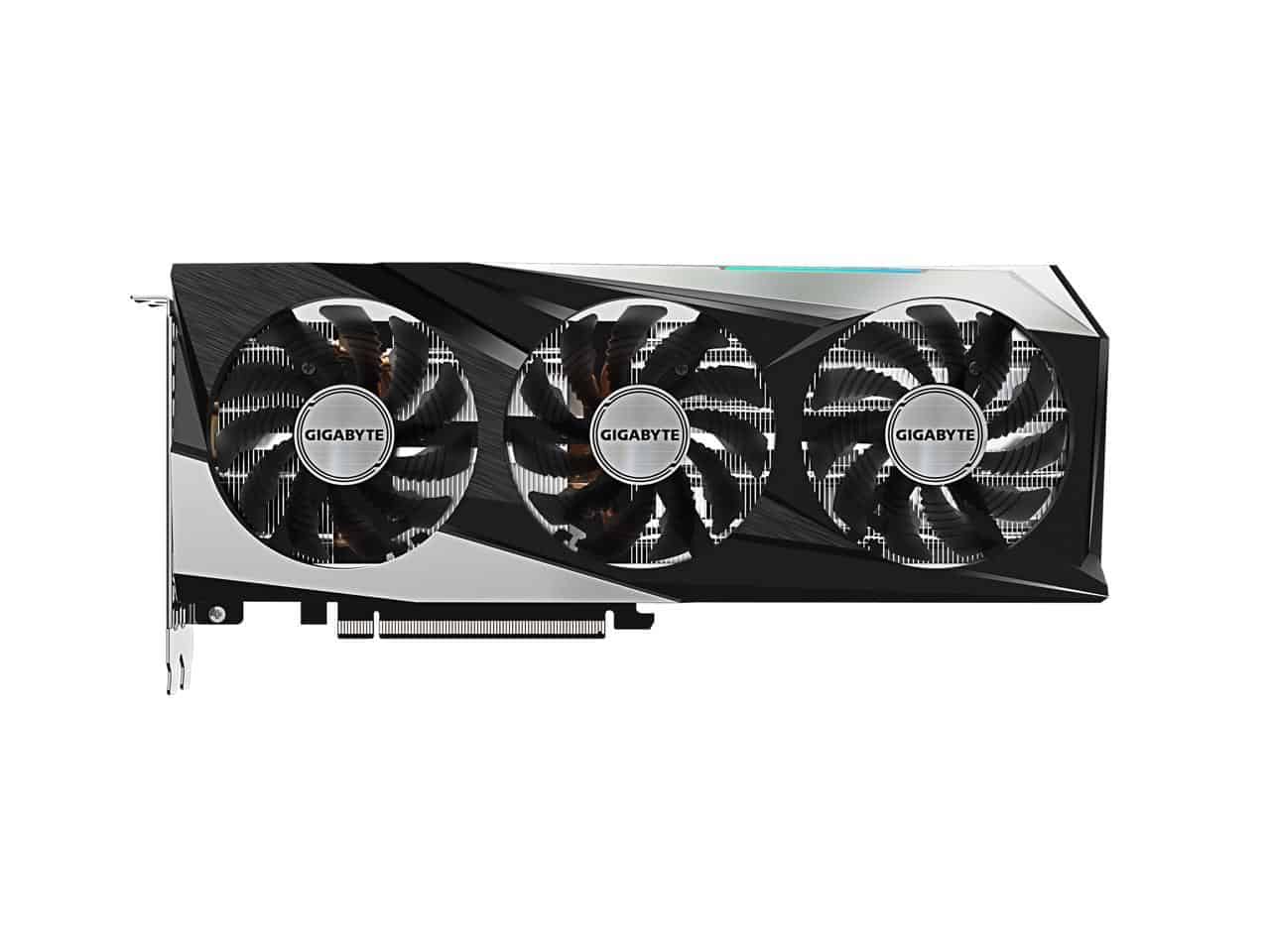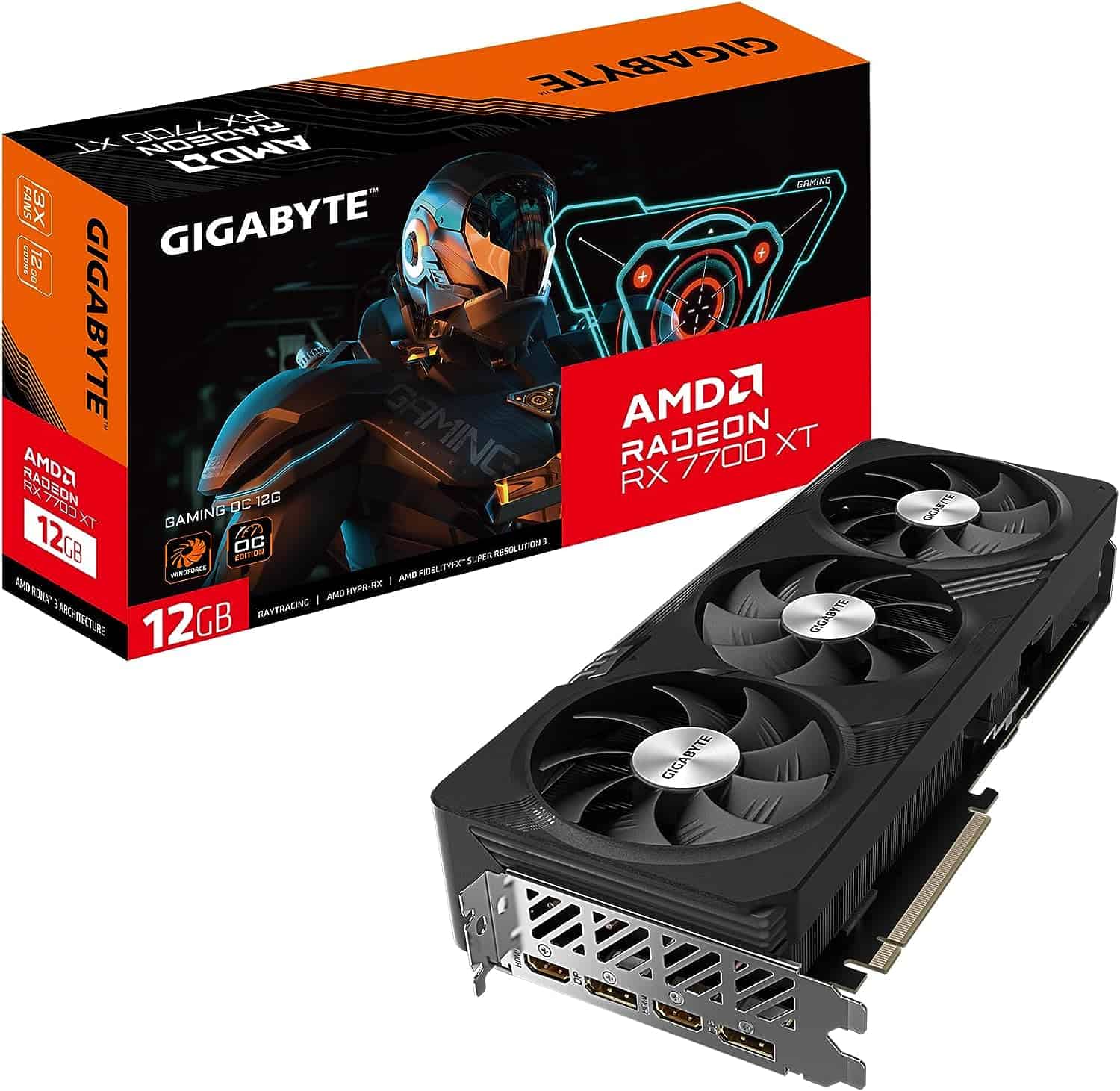RX 7700 XT vs RX 7600 – Which is right for you?

Table of Contents
In the debate of RX 7700 XT vs. RX 7600, choosing the right graphics card goes beyond just flashy features; it’s about delving into the specifics and assessing value for money. This comparison aims to dissect the strengths and weaknesses of both cards in the AMD Radeon RX lineup, providing clarity for gamers. We’ll simplify the technical jargon and focus on what each card brings to the table, helping you align your choice with your gaming preferences and budget.
Whether you’re pairing it with an AMD Ryzen CPU or looking for the best fit in the series GPUs, we’ve got you covered.
Prime Day is finally here! Find all the biggest tech and PC deals below.
- Sapphire 11348-03-20G Pulse AMD Radeon™ RX 9070 XT Was $779 Now $739
- AMD Ryzen 7 7800X3D 8-Core, 16-Thread Desktop Processor Was $449 Now $341
- ASUS RTX™ 5060 OC Edition Graphics Card Was $379 Now $339
- LG 77-Inch Class OLED evo AI 4K C5 Series Smart TV Was $3,696 Now $2,796
- Intel® Core™ i7-14700K New Gaming Desktop Was $320.99 Now $274
- Lexar 2TB NM1090 w/HeatSink SSD PCIe Gen5x4 NVMe M.2 Was $281.97 Now $214.98
- Apple Watch Series 10 GPS + Cellular 42mm case Smartwatch Was $499.99 Now $379.99
- ASUS ROG Strix G16 (2025) 16" FHD, RTX 5060 gaming laptop Was $1,499.99 Now $1,274.99
- Apple iPad mini (A17 Pro): Apple Intelligence Was $499.99 Now $379.99
*Prices and savings subject to change. Click through to get the current prices.
RX 7700 XT vs. RX 7600: Specs comparison
The RX 7700 XT and RX 7600 belong to the RX 7000 series and use the RDNA 3.0 design. Unlike the older RDNA 2.0, they adopt TSMC's 5nm technology instead of the 7nm process. A major upgrade is the introduction of the world’s first GPU chipset design with RDNA 3.0, making these cards super efficient.
This means they perform really well, but to understand the differences between them, let's take a closer look at their specific features.
| Specifications | RX 7600 | RX 7700 XT |
|---|---|---|
| Architecture | RDNA 3.0 (2022) | RDNA 3 |
| Pipelines / CUDA cores | 2048 | 3456 |
| Core clock speed | 1720 MHz | 1700 MHz |
| Boost clock speed | 2655 MHz | 2544 MHz |
| Number of transistors | 13,300 million | 28,100 million |
| Manufacturing process technology | 6 nm | 5 nm |
| Power consumption (TDP) | 165 Watt | 245 Watt |
| Texture fill rate | 339.8 | 549.5 |
| Interface | PCIe 4.0 x8 | PCIe 4.0 x16 |
| Supplementary power connectors | 1x 8-pin | 2x 8-pin |
| Maximum RAM amount | 8 GB | 12 GB |
| Memory bus width | 128 Bit | 192 Bit |
| Memory clock speed | 18000 MHz | 18000 MHz |
| Memory bandwidth | 288.0 GB/s | 432.0 GB/s |
Architecture
The RX 7600, launched on May 24, 2023, harnesses the RDNA 3.0 architecture and the Navi 33 GPU. With 2048 pipelines, it provides a respectable core clock speed of 1720 MHz, performing efficiently on a 6nm manufacturing process. Sporting a 165-watt TDP, this 2-slot card features a texture fill rate of 339.8 and connects through PCIe 4.0 x8. While it offers a reasonable 8 GB GDDR6 memory with a 128-bit width, its strength lies in being power-efficient.
On the other side, the RX 7700 XT, released on August 25, 2023, boasts the RDNA 3 architecture and the Navi 32 GPU, exhibiting a higher pipeline count at 3456. Despite a slightly lower core clock speed of 1700 MHz, it excels in a more advanced 5nm manufacturing process, demanding a higher 245-watt TDP. This 2-slot powerhouse showcases a texture fill rate of 549.5 and connects via PCIe 4.0 x16.
Memory, dimensions, clock speed
Notably, it offers a substantial 12 GB GDDR6 memory with a wider 192-bit width. However, its power demands, requiring two 8-pin supplementary power connectors, mark a potential trade-off for its enhanced performance.
In terms of dimensions, the RX 7700 XT stands taller at 267mm, providing a larger physical footprint compared to the more compact RX 7600 at 204mm. Despite these differences, both models share similarities in memory clock speed (18000 MHz), DirectX support (12 Ultimate), and OpenGL capabilities (4.6).
Power-efficiency
In essence, the RX 7600 positions itself as a power-efficient contender, suitable for users prioritizing a balance between performance and energy consumption. On the flip side, the RX 7700 XT emerges as a performance-driven option, catering to enthusiasts with higher power thresholds and a demand for superior capabilities.
RX 7700 XT vs. RX 7600: Performance
When comparing the RX 7700 XT and RX 7600, it’s clear that each caters to different user needs. The RX 7600, known for its energy efficiency, is perfect for those who prioritize a balanced performance in everyday computing and moderate gaming. It’s an ideal choice for popular titles like Forza Horizon and Shadow of the Tomb Raider, offering satisfactory frame rates without excessive power consumption.
In contrast, the RX 7700 XT is a powerhouse, designed for gaming aficionados and demanding applications. It excels in games like Red Dead Redemption, Horizon Zero Dawn, and Assassin's Creed Valhalla, thanks to its higher pipeline count and substantial VRAM. This card is not just about playing games; it’s about immersing yourself in them with top-notch performance, enhanced by features like DLSS and ray tracing.
For those who enjoy titles such as Resident Evil or Modern Warfare, the RX 7700 XT provides an unparalleled experience with its ability to handle intense graphics and deliver high frames. However, if your gaming is more casual, and you’re conscious about energy use, the RX 7600 is a more than capable option, striking a balance between performance and efficiency.
RX 7700 XT vs. RX 7600: Pricing
At $439, the RX 7700 XT commands a higher price tag, reflecting its advanced specifications and enhanced performance, making it a fitting choice for gaming enthusiasts and demanding applications. In contrast, the RX 7600, priced at $259, offers a more budget-friendly option, delivering respectable performance for users with moderate computing needs and a focus on cost-effectiveness.
Conclusion
In the realm of graphics cards, the RX 7700 XT stands tall at $439, promising a high-performance haven for gamers and power users. Its elevated cost mirrors the advanced technology under the hood.
Conversely, the RX 7600, priced at $259, emerges as a budget-friendly alternative, adept at delivering commendable performance for users mindful of financial considerations.
Tailor your choice to your specific needs, whether chasing peak performance or finding a smart balance between power and price.


